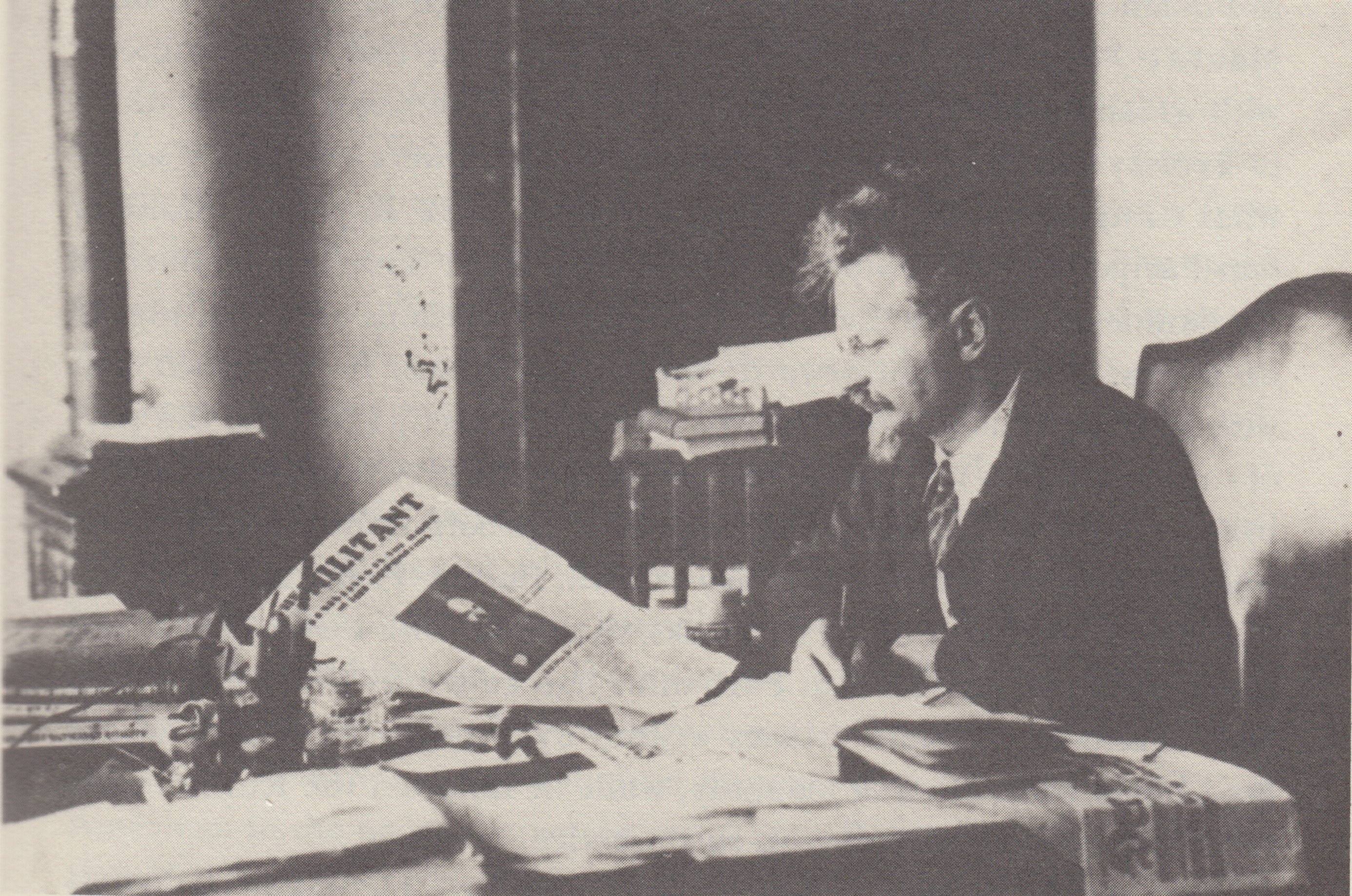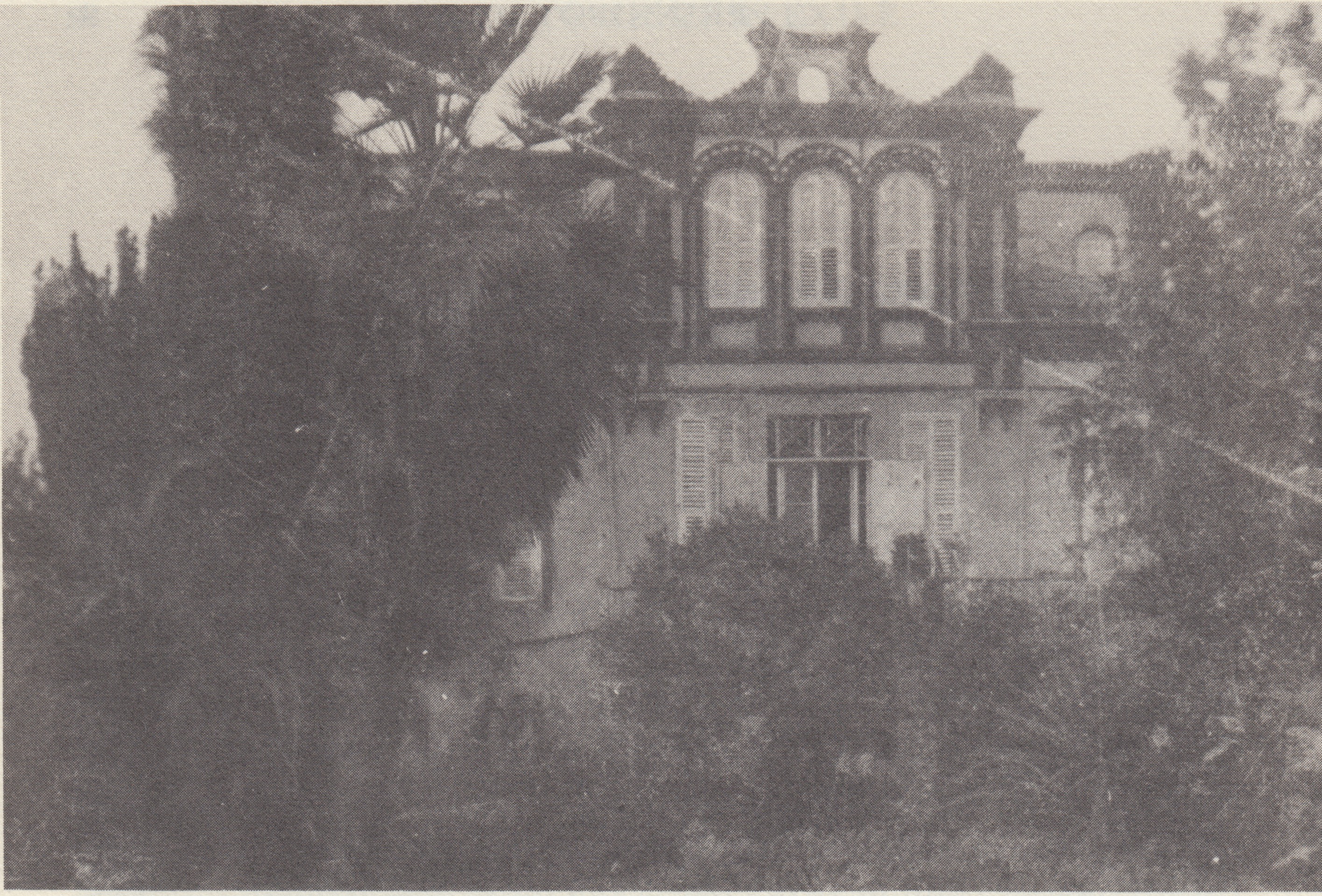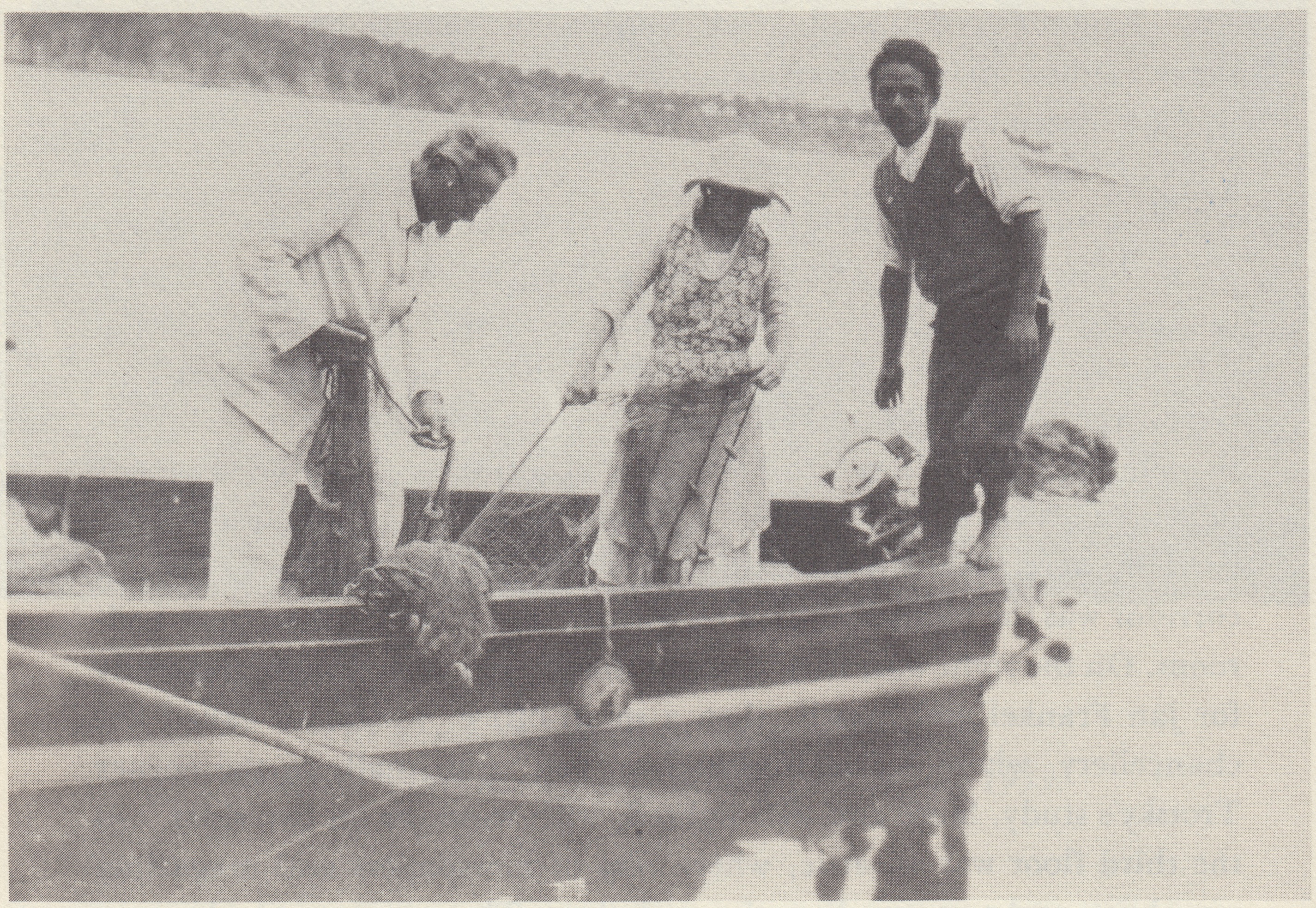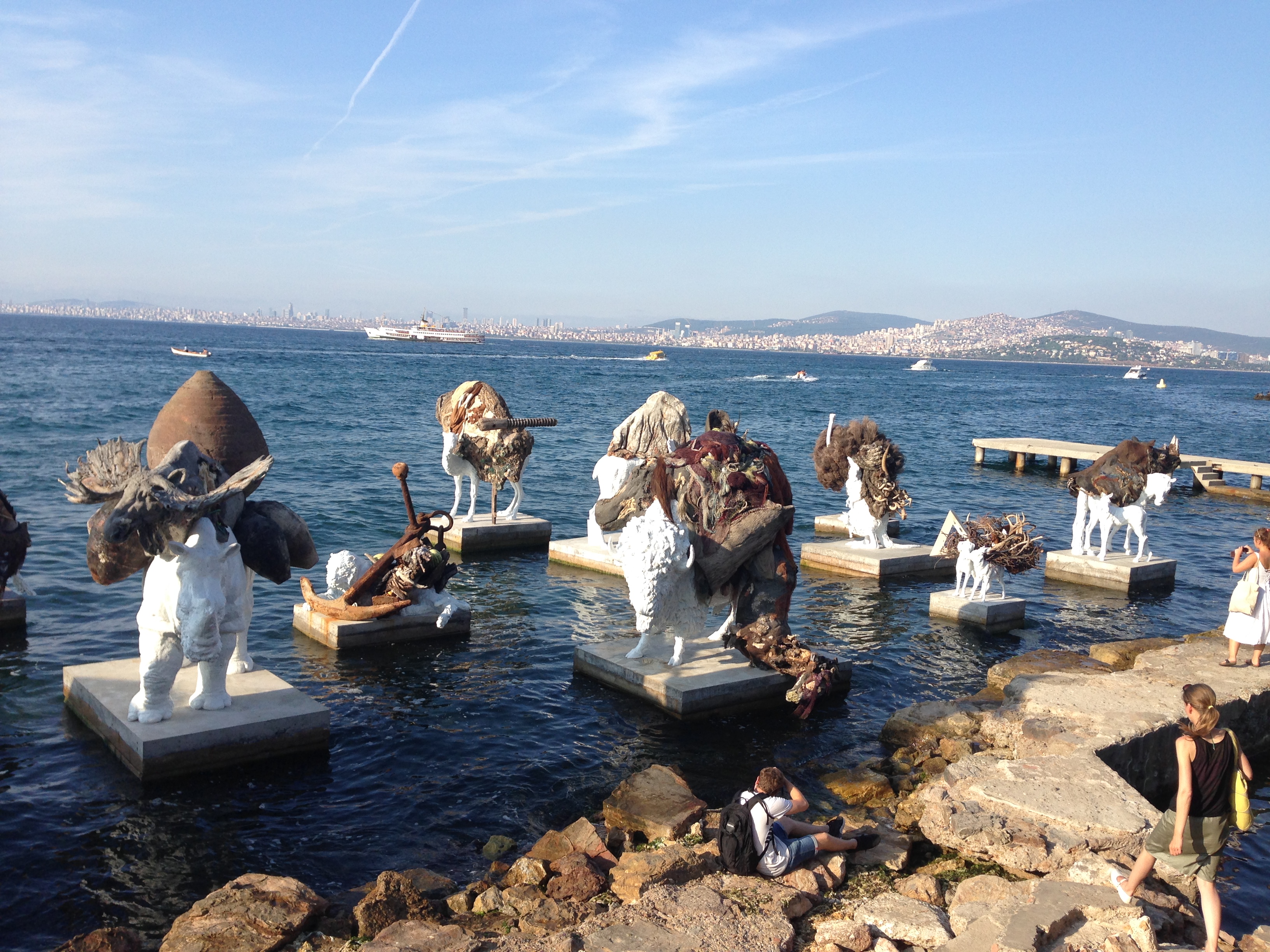Archive
Leon Trotsky
- Leon
- Trotsky
Лев Троцкий, Lew Trozki, Lew Dawidowitsch Bronstein
- 07-11-1879
- Ivanivka (UA)
- 21-08-1940
- Coyoacán (MX)
- Politician
Banished by Stalin, the revolutionary politician Leon Trotsky and his entourage arrived in Istanbul in 1929. He settled on Büyükada, one of the Princes’ Islands in the Sea of Marmara.
Word Count: 31

Trotsky at his desk, Büyükada, 1931, detail (Heijenoort 1978, 15). 
Trotsky at his desk, Büyükada, 1931 (Heijenoort 1978, 15). 
Yanaros Villa, Nizam Mahallesi Hamlacı Sokak No. 4, residence and exile domicile of Leon Trotsky on Büyükada, 1932/1933 (Heijenoort 1978, 10). 
Yanaros Villa, Nizam Mahallesi Hamlacı Sokak No. 4, Büyükada, 1932–33, view from the cul-de-sac (Heijenoort 1978, 10). 
Trotsky and entourage on a boat trip, Büyükada, around 1931–33 (Heijenoort 1978, 12). 
Yanaros Villa, Nizam Mahallesi Hamlacı Sokak No. 4, Büyükada, site of the 14th Istanbul Biennial in 2015 (Photo: Burcu Dogramaci). 
Adrián Villar Rojas’ installation The Most Beautiful of All Mothers at the Yanaros Villa, Nizam Mahallesi Hamlacı Sokak No. 4, Büyükada, as part of the 14th Istanbul Biennial in 2015 (Photo: Burcu Dogramaci). Althof, Wolfgang. Sträflingsinseln. Schauplätze der Verbannung. E.S. Mittler & Sohn, 2005.
Christov-Bakargiev, Carolyn. 14 Istanbul Bienali Rehberi Tuzlu Su / 14th Istanbul Biennial Guidebook: Saltwater. Yapı Kredı Yayınları, 2015.
Coşar, Ömer Sami. Troçki İstanbul’da (1969). Türkiye İş Bankası Kültür Yayınları, 2010.
Deleon, Jak. The White Russians in Istanbul. Remzi Kitabevi, 1995.
Deleon, Jak. Büyükada. Anıtlar Rehberi. A Guide to the Monuments. Remzi Kitabevi, 2003.
Deutscher, Isaac. Trotzki. Der verstoßene Prophet 1929–1940 (2nd ed.). Translated by Harry Maor, Kohlhammer, 1972.
Heijenoort, Jean van. With Trotsky in Exile. From Prinkipo to Coyoacán. Harvard University Press, 1978.
Pinguet, Catherine. Les îles des Princes. Un archipel au large d’Istanbul. Empreinte, 2013.
Sartorius, Joachim. Die Prinzeninseln (2nd ed.). mareverlag, 2010.
Service, Robert. Trotzki. Eine Biographie. Suhrkamp, 2012.
Simenon, George. “Besuch bei Trotzki (Paris-Soir, 16./17. Juni 1933).” Idem. Das Simenon-Lesebuch. Erzählungen, Reportagen, Erinnerungen. Briefwechsel mit André Gide. Brief an meine Mutter, edited by Daniel Keel et al., Diogenes, 2002, pp. 215–231.
Word Count: 154
Turkey (1929–1933); France (1933-1935); Norway (1935/36); Mexico (1936–1940).
Izzet Paşa Sokak 29, Şişli, Istanbul (residence, 1929); Çankaya Sokak 18, Büyükada/Prinkipo, Istanbul (residence, 1929–1931); Şıfa Sokak No. 22, Moda, Istanbul (residence, 1931/32); Yanaros Villa, Nizam Mahallesi Hamlacı Sokak No. 4, Büyükada/Prinkipo, Istanbul (residence, 1932/33).
- Istanbul
- Burcu Dogramaci. " Leon Trotsky." METROMOD Archive, 2021, https://archive.metromod.net/viewer.p/69/2949/object/5138-7740542, last modified: 15-04-2023.
-
Gustav OelsnerArchitectCity PlannerIstanbul
Gustav Oelsner became the founding father of urban planning in Turkey, his country of exile. He was also the author of numerous articles for the architectural journal Arkitekt.
Word Count: 28
Roman BilinskiPainterSculptorCollectorArt restorerIstanbulAt the beginning of the 1920s, a member of the Union of Russian Painters in Constantinople, Roman Bilinski was known as a sculptor. At the end of the 1920s–beginning of the 1930s – as a sculptor, painter and connoisseur of local antiques.
Word Count: 42
Russkiy v Konstantinopole/Le Russe à ConstantinopleGuide-bookIstanbulThe guide-book was created for Russian-speaking refugees who had to leave their country and settle in Constantinople.
Word Count: 17
Alexis GritchenkoPainterArt HistorianIstanbulDuring the two years of his life that he spent in Istanbul, Alexis Gritchenko produced more paintings dedicated to the city than many artists produce in an entire lifetime.
Word Count: 29